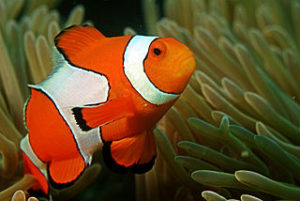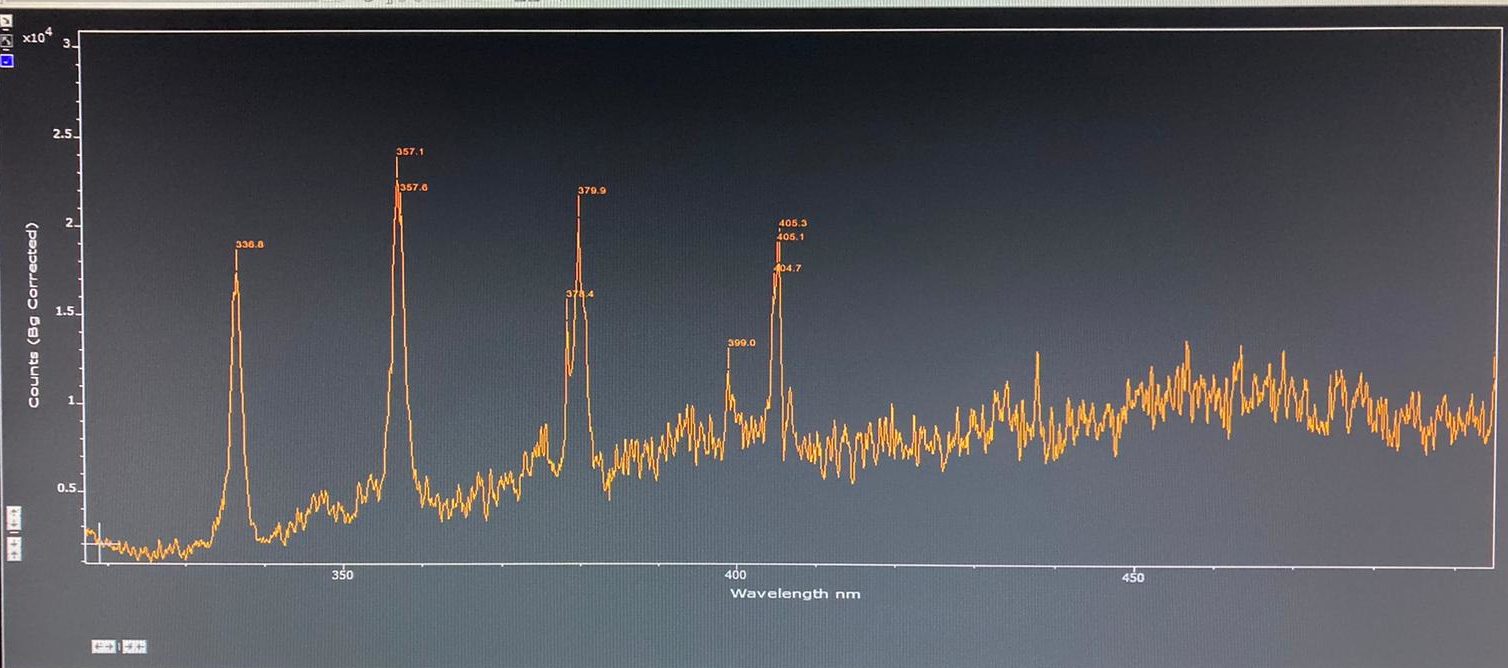 Dr. Mikhail Shneider was looking for an alternative answer to this question: can plasma generated at air-liquid interface be used to modify cell biology? His research is focused on osmosis – diffusion of water – in cell environment activated by a non-equilibrium plasma source. He studied ion movements due to electric field in the concept of electro-osmosis and emphasized that hydrated ions with a water shell around become larger in size and slower in mobility. The varying dimensions and time scales can be utilized for the selectivity of cell membrane. The osmotic pressure outside cells can be controlled by plasma and be adjusted to damage cell membrane. Additionally, air or oxygen plasma-treated water becomes acidic and disrupts the outer walls of bacteria and viruses. He specifically underlined that osmotic pressure cannot be the only mechanism destroying cells; however, its role cannot be studied in detail yet.
Dr. Mikhail Shneider was looking for an alternative answer to this question: can plasma generated at air-liquid interface be used to modify cell biology? His research is focused on osmosis – diffusion of water – in cell environment activated by a non-equilibrium plasma source. He studied ion movements due to electric field in the concept of electro-osmosis and emphasized that hydrated ions with a water shell around become larger in size and slower in mobility. The varying dimensions and time scales can be utilized for the selectivity of cell membrane. The osmotic pressure outside cells can be controlled by plasma and be adjusted to damage cell membrane. Additionally, air or oxygen plasma-treated water becomes acidic and disrupts the outer walls of bacteria and viruses. He specifically underlined that osmotic pressure cannot be the only mechanism destroying cells; however, its role cannot be studied in detail yet.
Category: Science News
Seminar notes: Plasma Design of 2D Nanostructures and Beyond Graphene
Prof. Uroš Cvelbar discussed their work on plasma assisted graphene nanowall growth on plasma treated substrates in changing conditions of pressure and temperature as well as different gas mixtures. His group and collaborators worked on a computational model of large scale production. The model confirmed that lateral surface diffusion through nanoflakes are the main mechanism in catalysis rather than vertical particle transfer because of the ion bombardment causing surface defects and resulting an increase in surface adsorption energy. This was the key takeaway for my future research on understanding of the mechanisms of plasma sintering.
https://mipse.umich.edu/ltp_seminars.php
Notes from Gaseous Electronics Conference (GEC) 2020
Well… Having the whole conference on Zoom was an interesting experience but in fact I like it! There were little to zero technical difficulties and we were able to ask our questions on a chat box. Except for free food, I might prefer online conferences in the future. Because, I took great notes during presentations and while watching the pre-recorded ones! I also attended a very important workshop for myself: Women in Plasma Science. I want to share my notes and opinions on it.
Continue reading “Notes from Gaseous Electronics Conference (GEC) 2020”
Oceans as a memory of evolution
I have encountered with a fascinating article! It is about tracking the evolution of viruses and how they make the other species sick by observing flora and chemical composition of oceans! Here is the most influential parts for me:
Excited electrons driving a reaction have been observed for the first time
“In past molecular movies, we have been able to see how atomic nuclei move during a chemical reaction,” said Peter Weber, a chemistry professor at Brown and senior author of the report. “But the chemical bonding itself, which is a result of the redistribution of electrons, was invisible. Now the door is open to watching the chemical bonds change during reactions.”
Continue reading “Excited electrons driving a reaction have been observed for the first time”
Seminar notes: The Evolution of Males and Females
 Professor Judith Mank talked about variety of sexual evolutions and adaptations in living organisms, including humans, sea turtles, wild turkeys, gobies, clownfish and so on. The important point she made was that reproduction mechanisms can be extremely diverse for evolutionary advantages. Being larger and colorful or having many offspring can be good or bad. Moreover, sexes can be determined by environmental factors, such as temperature. As a result of the current climate change, some reptiles and sea turtles are having more male members, for example. This has totally changed the sex ratios and natural balance of some species. Now, conservation biologists are trying to preserve endangered species by keeping their eggs in incubators to simulate their fertilization conditions before the human-made climate change.
Professor Judith Mank talked about variety of sexual evolutions and adaptations in living organisms, including humans, sea turtles, wild turkeys, gobies, clownfish and so on. The important point she made was that reproduction mechanisms can be extremely diverse for evolutionary advantages. Being larger and colorful or having many offspring can be good or bad. Moreover, sexes can be determined by environmental factors, such as temperature. As a result of the current climate change, some reptiles and sea turtles are having more male members, for example. This has totally changed the sex ratios and natural balance of some species. Now, conservation biologists are trying to preserve endangered species by keeping their eggs in incubators to simulate their fertilization conditions before the human-made climate change.
Here is the YouTube link: The Evolution of Males and Females – with Judith Mank
Fifth force?! Wow!
It is happening, and it is happening now. A group of Hungarian researchers showed evidences of a possible-fifth force in the universe! If their results can be reproduced by the others, we know exactly who will get the next Nobel prize!
 This is the website I first read all the details: Physicists Claim They’ve Found Even More Evidence of a New Force of Nature
This is the website I first read all the details: Physicists Claim They’ve Found Even More Evidence of a New Force of Nature
This is a fancy look: A ‘no-brainer Nobel Prize’: Hungarian scientists may have found a fifth force of nature
Plasma meets with Kapton surface
Dielectric barrier discharges are a type of AC plasmas aiming to limit current in time to prevent spark formation. The dielectric layer holds charges, instead of letting them flow as in conductive materials. The constant exposure to plasma species causes wear/deformation on the surface. Here I show an example of Kapton layer.
Seminar notes: Bubble Puzzles
Here is a summary of an interesting talk on bubbles!

Prof. Lohse has given us an interesting talk ranging from shrimp to Lawrence of Arabia. The main topic was the bubble formation on fluids and solids. First, he started with a well-known example of bubbles in a glass of water. He examined the jet formation while bubbles are collapsing. Then, he showed a video of a snapping shrimp who kills its prey by a water jet as formed after bubbles. We also saw that a huge ship can be crashed by ultrasonic sound waves travelling in the ocean. This process is similar to bubble and then, jet formations. At the end, he talked about the similar phenomenon at desert sand and he concluded with a scene form Lawrence of Arabia. With this fascinating talk, we learned how the fundamental understanding of the bubble formation can lead to improvements in different areas.
Info for the speaker:wiki
Seminar notes: Is Hydrodynamics Relevant to the Origin of Life?
We are attending at least 8 seminars for every semester. Here is a short summary of the most interesting one!
This was an interesting talk mostly focused on the bubbles formed in ocean and relating those
with the origin of life. The speaker mentioned the mechanical forces created by waves in
ocean and pointed out that his group is solving a kind of hydrodynamics problem in a tube.
This tube can be any organic material can be found in ocean. They chose DNA nanotubes
because these are easy to obtain in lab. Then, they studied hydrodynamic shear on bursting
bubbles after breaking of the waves. His group measured and calculated shear and flow rate
inside DNA nanotubes in bubble foams and they found due to the high flow rates inside these
tubes, elongation of the tubes can cause fragmentation which can drive the production of new
molecules.
Speaker: Rizal Hariadi





Recent Comments